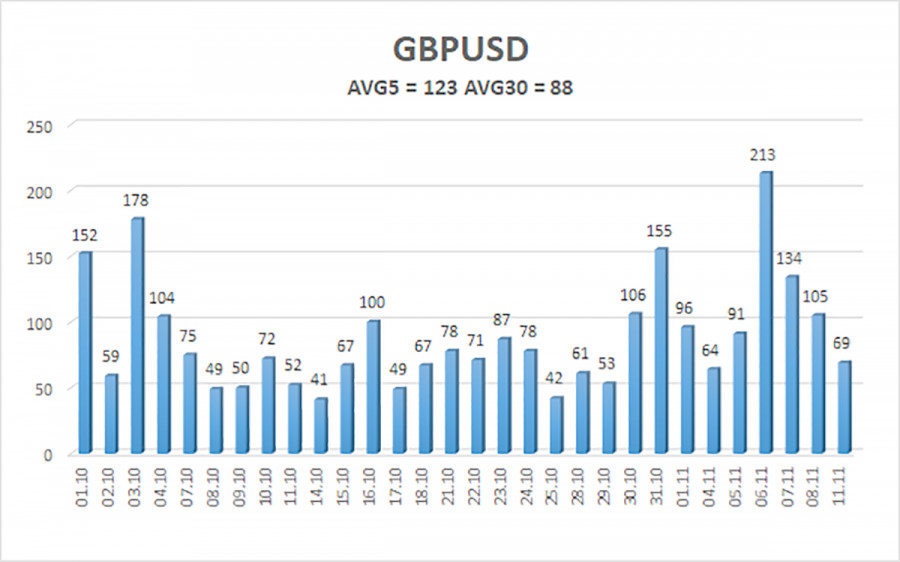

The GBP/USD currency pair also declined on Monday despite the lack of apparent reason. The British pound has been falling for a month and a half, beginning immediately after the September FOMC meeting, where the Federal Reserve decided to cut the key interest rate by 0.5%. Think about it—the Fed implemented a dovish half-point rate cut, and the dollar responded with a 1.5-month rally. Doesn't that seem contradictory?
This movement aligns with what we've explained repeatedly: local macroeconomic and fundamental factors may fluctuate, supporting either the dollar or the pound in the short term. However, the global trend and underlying fundamentals remain consistent. The global trend reflects the direction market makers prefer, while the global fundamentals indicate potential future market moves. And what do they tell us?
The pound's global trend has been bearish for 16 years. While this trend will eventually end, such a shift would require significant justifications. The recent two-year growth of the pound is nothing more than a correction on the weekly time frame. Corrections can occur even at larger time frames and often take considerable time. This correction, combined with the illogical rally of the pound over the past two years, has long suggested that the market is preparing for a substantial depreciation.
The pound's resilience is primarily due to the Bank of England. The British central bank continues to delay rate cuts, citing concerns over inflation. Unlike the Fed, the market has not priced in the BoE's monetary policy easing. However, despite the BoE's cutting rate pace, we believe the pound will continue to weaken. Even if the global downtrend ended in September 2022 and the pair has been in a two-year rally since a significant correction is still necessary. Thus, a noticeable correction against this growth is needed. The target for this correction lies around 1.1850, a level we've highlighted since the start of the year.
Should the pound fall to 1.1850, any potential new uptrend would require strong fundamental reasons. If the U.S. economy avoids economic, financial, or geopolitical crises over the next four years, there will be no justification for prolonged dollar depreciation. Thus, if the pair does not update the lows of September 2022, then we will be inclined to a flat on the weekly TF but not to a new upward trend.

The average volatility for GBP/USD over the last five trading days is 123 pips, categorized as "high." On Tuesday, November 12, we anticipate movement within the range of 1.2746 to 1.2992. The linear regression channel has turned downward, signaling a bearish trend. The CCI indicator has formed a bullish divergence, but the rebound has already occurred, leaving the price in a flat range.
Nearest Support Levels:
S1: 1.2848
S2: 1.2817
S3: 1.2787
Resistance Levels:
R1: 1.2878
R2: 1.2909
R3: 1.2939
The GBP/USD pair maintains its bearish trend. We continue to avoid long positions, as we believe that all factors driving the pound's growth have been priced in multiple times. If you trade on "pure technique," Long Positions may only be considered if the price rises above the moving average, targeting 1.3000 and 1.3031 when the price is located above the moving average line, but now the market is flat. Moreover, the flat is clearly with a downward slope. Short Positions remain more relevant, with targets at 1.2817 and 1.2756 as long as the price stays below the moving average.
Linear Regression Channels help determine the current trend. If both channels are aligned, it indicates a strong trend.
Moving Average Line (settings: 20,0, smoothed) defines the short-term trend and guides the trading direction.
Murray Levels act as target levels for movements and corrections.
Volatility Levels (red lines) represent the likely price range for the pair over the next 24 hours based on current volatility readings.
CCI Indicator: If it enters the oversold region (below -250) or overbought region (above +250), it signals an impending trend reversal in the opposite direction.

QUICK LINKS